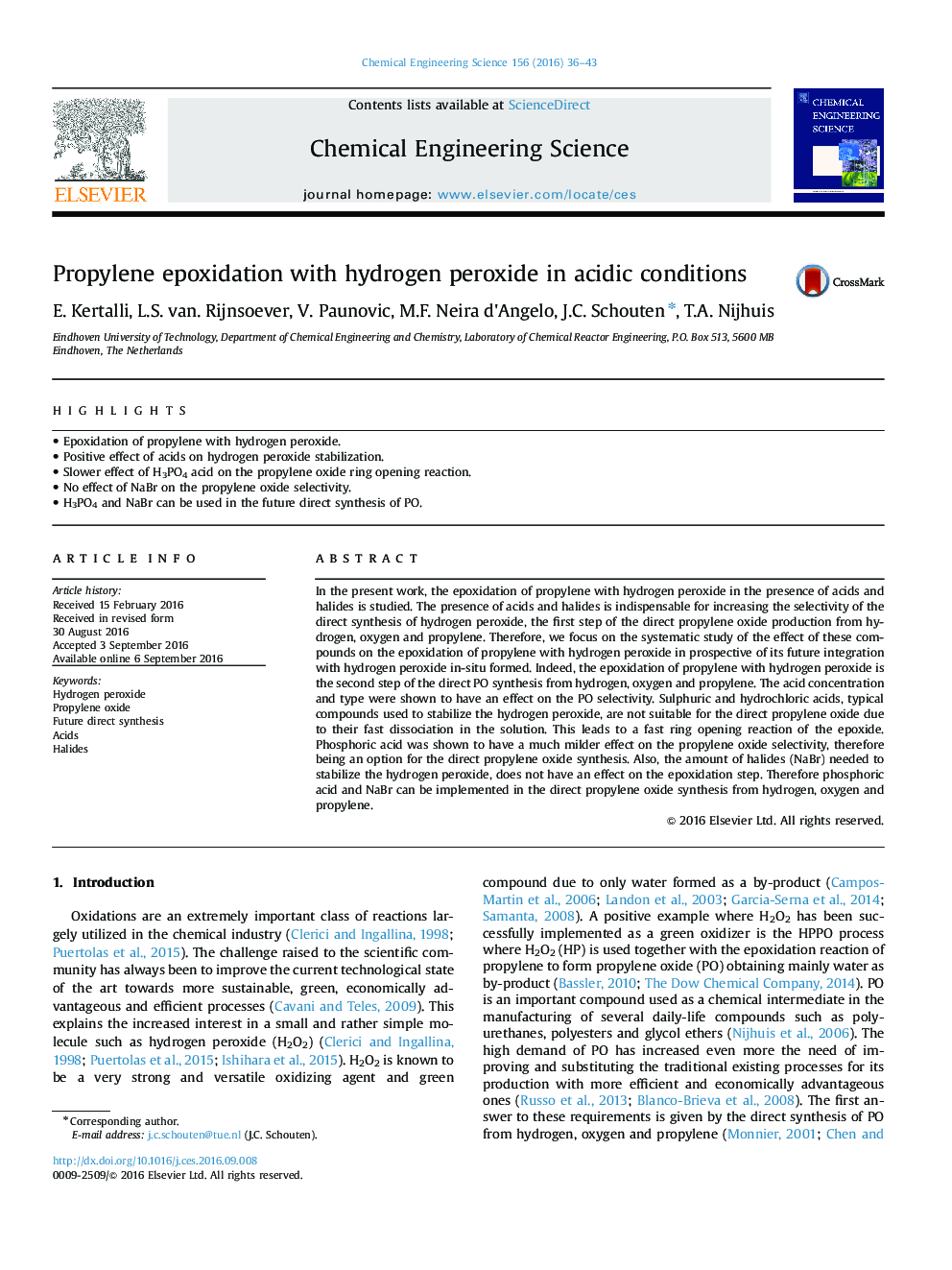| Article ID | Journal | Published Year | Pages | File Type |
|---|---|---|---|---|
| 6467806 | Chemical Engineering Science | 2016 | 8 Pages |
â¢Epoxidation of propylene with hydrogen peroxide.â¢Positive effect of acids on hydrogen peroxide stabilization.â¢Slower effect of H3PO4 acid on the propylene oxide ring opening reaction.â¢No effect of NaBr on the propylene oxide selectivity.â¢H3PO4 and NaBr can be used in the future direct synthesis of PO.
In the present work, the epoxidation of propylene with hydrogen peroxide in the presence of acids and halides is studied. The presence of acids and halides is indispensable for increasing the selectivity of the direct synthesis of hydrogen peroxide, the first step of the direct propylene oxide production from hydrogen, oxygen and propylene. Therefore, we focus on the systematic study of the effect of these compounds on the epoxidation of propylene with hydrogen peroxide in prospective of its future integration with hydrogen peroxide in-situ formed. Indeed, the epoxidation of propylene with hydrogen peroxide is the second step of the direct PO synthesis from hydrogen, oxygen and propylene. The acid concentration and type were shown to have an effect on the PO selectivity. Sulphuric and hydrochloric acids, typical compounds used to stabilize the hydrogen peroxide, are not suitable for the direct propylene oxide due to their fast dissociation in the solution. This leads to a fast ring opening reaction of the epoxide. Phosphoric acid was shown to have a much milder effect on the propylene oxide selectivity, therefore being an option for the direct propylene oxide synthesis. Also, the amount of halides (NaBr) needed to stabilize the hydrogen peroxide, does not have an effect on the epoxidation step. Therefore phosphoric acid and NaBr can be implemented in the direct propylene oxide synthesis from hydrogen, oxygen and propylene.
